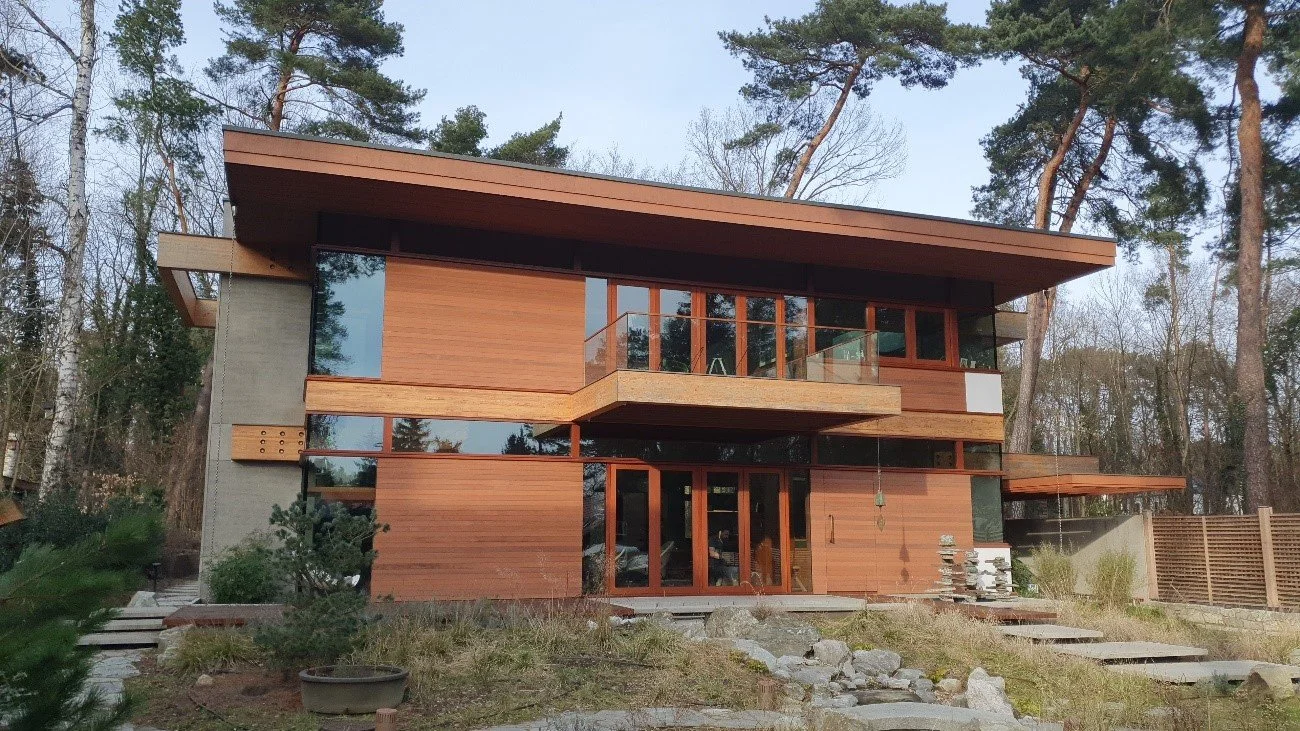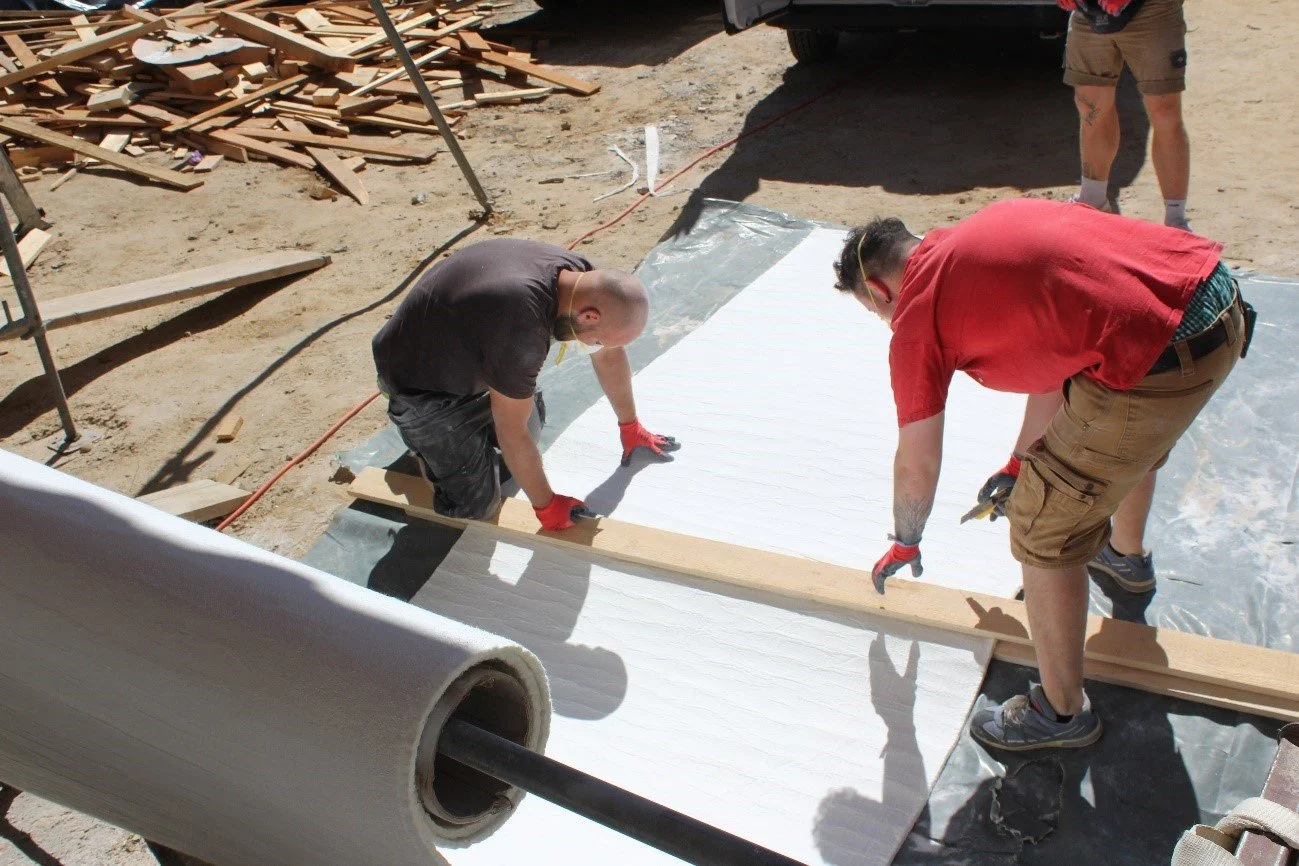Lightweight building aesthetics and energy efficiency? No contradiction. The Triesch Residence as case study.
The climate change as well as surging energy prices create a pressing trend towards more energy efficiency in buildings to lower carbon dioxide emissions and energy consumption for heating and cooling. While essential from the sustainability point of view, the drive towards more energy efficiency has a well visible and undesirable impact on building aesthetics: Walls need to become increasingly thicker since layers of thermal insulation material such as mineral wool, expanded polystyrene or polyurethane foam need to keep up with the ever stricter energy-efficiency requirements. There is only so much performance available from these well-established thermal insulation materials.
This translates to ever thicker insulation layers and walls. However, as a downside, the resulting building designs become heavier in appearance. Windows become deeper and restrict the outside view. Altogether, an unpleasant, cumbersome aesthetic sensation is created.
Aerogels are a high-performance alternative to conventional thermal insulation. Currently, these materials are used where space matters most. Usually two aspects are relevant in construction:
Where existing buildings require energetic renovation to improve energy efficiency, often little space is available for thermal insulation e.g. on the inner side of exterior walls, in wall cavities or beneath floors. Strongly limited space benefits from the highest possible performance of aerogels - to maximize energy efficiency.
For new building projects, the higher performance of aerogels enables slimmer wall construction. This conserves valuable useable space in the building. While using aerogels seems expensive at first, the use of these high-performance products pays off in many cases. The additional space the slimmer wall design creates leads to additional revenue that can cover the cost of the aerogel materials and more, which makes the decision on using aerogel materials economically attractive to investors.
But a third aspect is often overlooked: Aerogels also enable new possibilities in terms of building aesthetics, since much more lightweight building designs become possible. Construction no longer needs to be heavyweight to be energy efficient.
The Triesch Residence (photo: Dirk Weinrich).
This has been impressively achieved with the Triesch Residence in Berlin. When furniture expert Lars Triesch decided to translate the beautiful building design of architect Ray Kappe from California to Berlin, he was confronted with a dilemma: For the original building in the United States with its breathtaking lightweight design based on redwood and concrete no thermal insulation had been used. The more extreme Berlin climate would not allow such an approach, less so since current energy efficiency standards were to be met within the project.
Happily, Triesch found a potential solution when learning about aerogel materials and the pioneering work of chemical company BASF in this space. He contacted Dr. Marc Fricke, now CEO of aerogel-it GmbH and at the time BASF business development manager for aerogel materials. Dr. Fricke was immediately convinced that aerogels were the key solution for the Triesch building design and brought architect and aerogel construction experts Dr. Alexander Kahnt and Matthias Tietze of Kahnt & Tietze GmbH into the project. Together, the team re-designed the original details of the Ray Kappe building. They incorporated aerogels into the building envelope to achieve the desired energy efficiency performance of the building while maintaining the original lightweight appearance of the Kappe design:
The redwood wall elements and pillars were re-designed as cassettes of a slim redwood envelope enclosing an aerogel-containing thermal-insulation layer.
The massive, steel-reinforced concrete elements were re-designed as slim carbon-reinforced, prefabricated concrete sandwich elements with a central aerogel-containing thermal-insulation layer.
Keeping the original slim construction was only possible due to the excellent performance of the space-saving aerogel materials. The result was extraordinary and the building iconic. Compared to conventional construction with standard thermal insulation, the wall thickness was reduced to around 20 cm with aerogel insulation as opposed to 30-40 cm. The slim walls had a huge impact on building aesthetics. The benefits became visible after successful completion of the construction project: The Kappe design retained its aesthetic appeal in the new building in Berlin.
Aerogel superinsulation is cut to the desired shape by the construction team on site (photo: HTWK Leipzig).
Aerogel superinsulation is applied to the wooden structure of the Triesch residence (photo: HTWK Leipzig).
Recently, the team had the chance to visit the Triesch Residence and experience the building in use. After three years, owner Lars Triesch was more than happy with the experience of living in the building and with the high level of energy efficiency that has been achieved. Despite the open and lightweight structure with its slim walls, the heating system was only rarely required by the family.
The aesthetics of the design and its potential for future projects impressed the aerogel experts of aerogel-it GmbH and Kahnt & Tietze GmbH. The two companies recently signed a memorandum of understanding on collaborating on the combination of prefabrication technology and slim aerogel insulation. The visit convinced all parties that this technology combination makes sense.
View from the inside: The slim wall and pillars connected to the glass elements seem to be massive redwood but are hollow cassettes containing aerogel superinsulation (photo: Dirk Weinrich).
The slim, lightweight redwood wall construction in the kitchen (photo: Dirk Weinrich).
The slim, lightweight carbon concrete construction in the sitting area which contains a layer of aerogel superinsulation (photo: Dirk Weinrich).
The project team visits the Triesch Residence three years after completion of the project (from left to right: Dr. Alexander Kahnt, Lars Triesch, Dr. Marc Fricke, Dr. Matthias Tietze, Dr. Dirk Weinrich; photo: Lars Triesch).
For more information on the Triesch Residence, see here.
For more information on lightweight construction with aerogels, contact us or Kahnt&Tietze GmbH.







